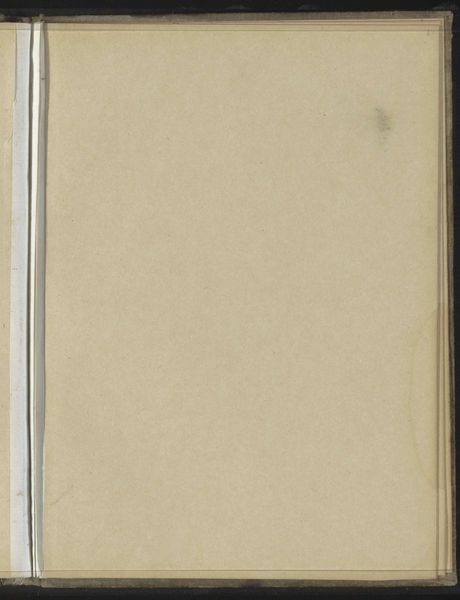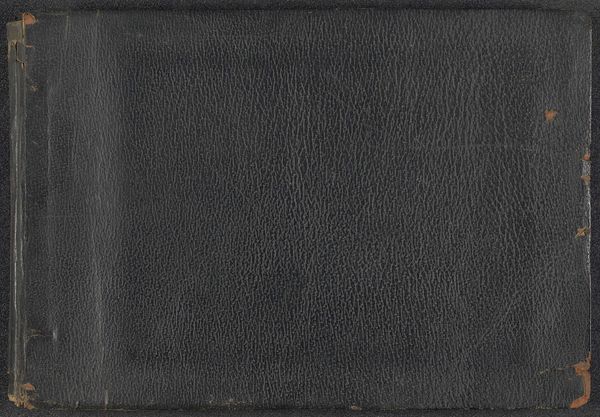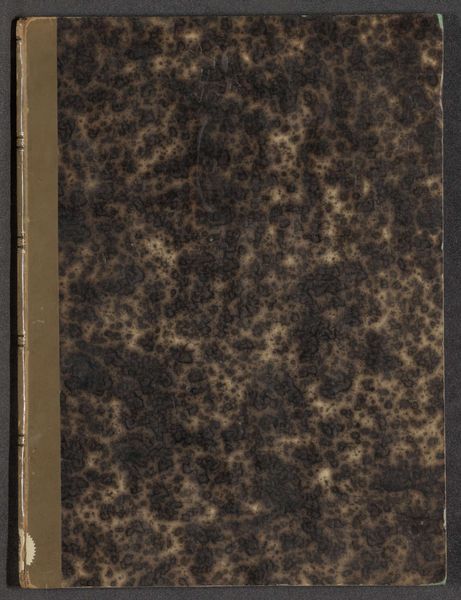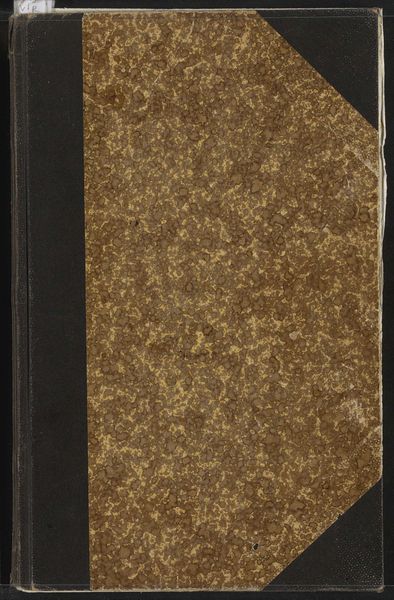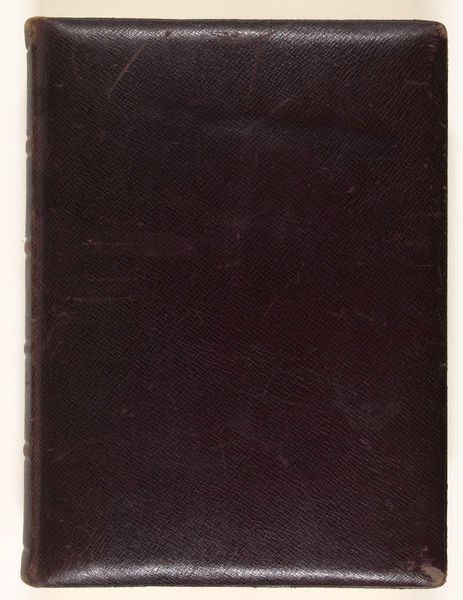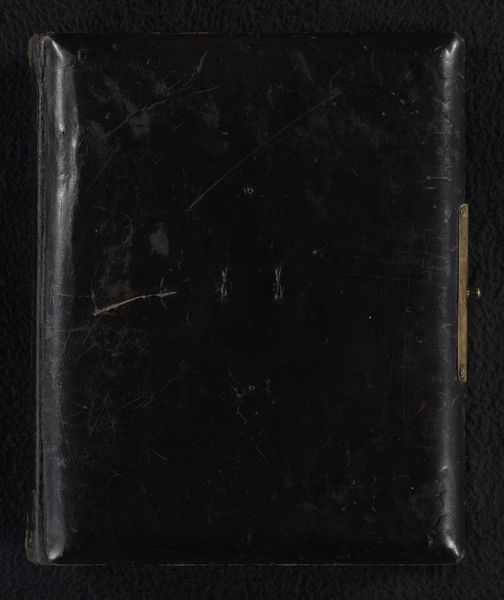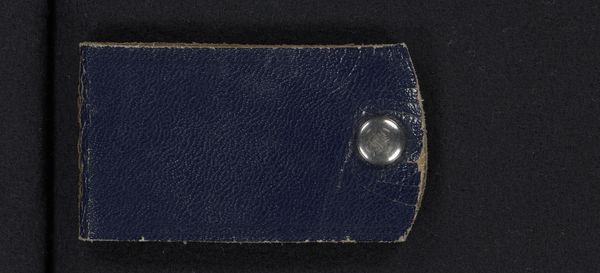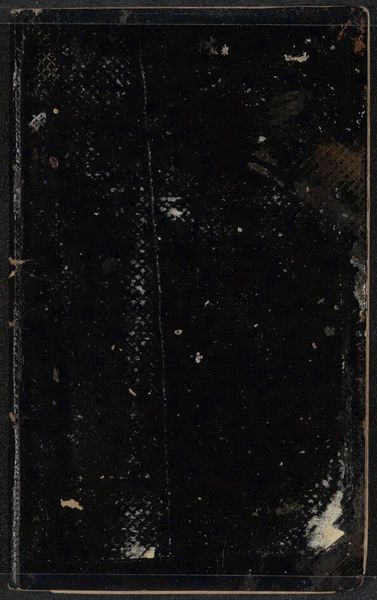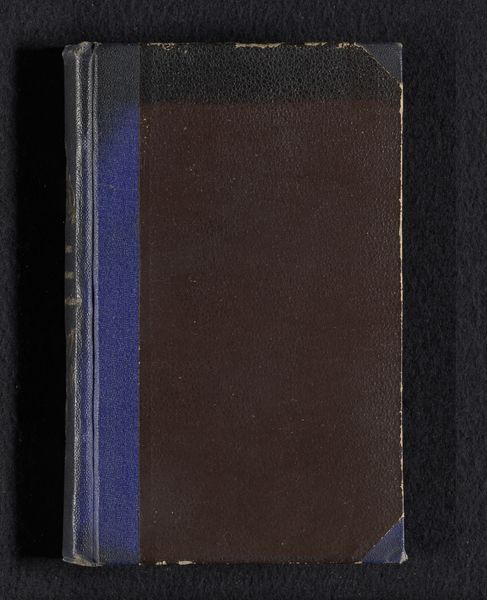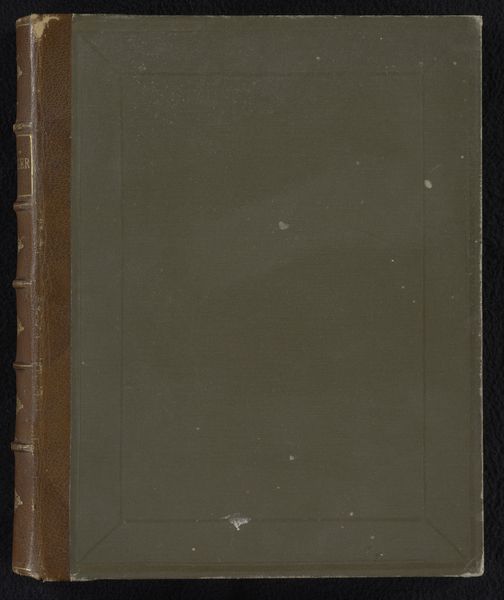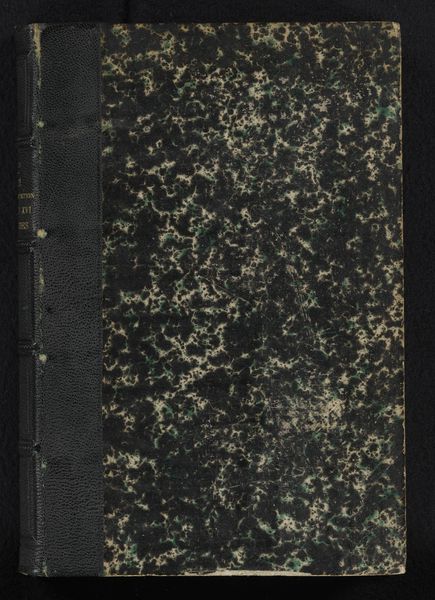
Fotoalbum met kabinetfoto's van bezienswaardigheden in Parijs en Versailles c. 1870 - 1900
0:00
0:00
diversevervaardigers
Rijksmuseum
photography, albumen-print
#
still-life-photography
#
worn
#
photography
#
albumen-print
Dimensions: height 232 mm, width 495 mm, width 220 mm, thickness 62 mm
Copyright: Rijks Museum: Open Domain
Curator: At first glance, it’s somber, nearly monochrome. The texture suggests age, use, history… Editor: Indeed. What you're observing is a photo album dating roughly between 1870 and 1900. It’s filled with cabinet cards depicting scenes from Paris and Versailles. Curator: Ah, Paris! Versailles! The heart of French power. An empire captured through multiple eyes and then contained and constrained within this leather and binding. How fascinating. It seems quite aged, doesn't it? Almost worn to perfection by hands and time. Editor: Exactly! The album's "worn" condition actually lends insight into its circulation. Albums like this would have been very fashionable among those seeking an intimate form of visual tourism or acting as keepsakes for sentimental preservation. Curator: So, imagine families gathered around this album. What are they seeing? Imposing architectural symbols, I imagine, reinforcing a sense of national identity. It's not just a collection of photos; it's an artifact imbued with sociopolitical and economic currents of the Belle Époque. Editor: I appreciate how you bring in the social layer, but what strikes me foremost is the organization of images; how the album functions almost as a visual archive with formal relationships being set up with images placed adjacent to one another, forming dialogues based on visual form rather than content itself. Curator: Interesting. And yet, wouldn't those formal arrangements also serve a didactic function, reinforcing societal hierarchies, the approved aesthetics, the political landscape that benefits some but marginalizes others? Editor: Perhaps, yet focusing merely on politics limits the potential. One might equally appreciate it simply as a testament to composition or photographic printing. Curator: Ultimately, that kind of focus on structure feels limiting. To truly engage, we have to place the piece within its moment of creation and trace the routes of its circulation and reception. Thanks to these, an album as simple as this can say quite a bit about society at the time it was produced. Editor: Agreed. While its materiality certainly has charm, I'm now inspired to research these "views" in Parisian photographic history.
Comments
No comments
Be the first to comment and join the conversation on the ultimate creative platform.
